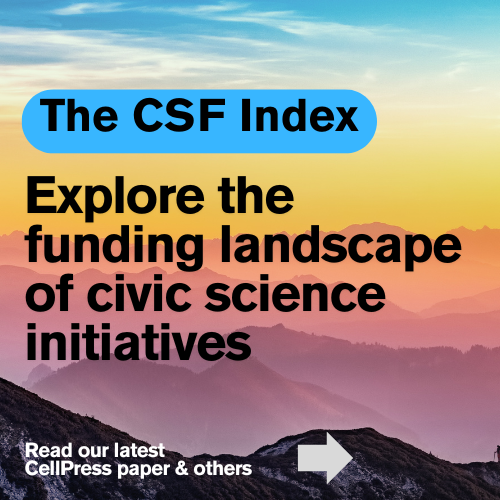CSO - Stories in Science
Making My Way from Mountains to Mud: Part 1

– Robin McLachlan –
Graduate Student | University of Washington | Oceanography | Sediment Dynamics Group
<> How did I make my way from mountains to mud? Well, I had just graduated high school and was celebrating my last summer before starting college by taking a cross-country road trip with my older sister. We were both young and poor and adventurous. As such, our days consisted of long hours behind the wheel, sprinkled with stops at free road side attractions and every national park we could squeeze into our circuitous route. Our nights were spent in the cheapest bed we could find – the back of our own car.
As the scorching magma rose towards earth’s surface and cooled, tiny crystals within the magma slowly took shape, grew, intermingled, and solidified, parenting the granitic rocks that were hoisted upwards, sculpted by glaciers, and colonized by soil, trees, woodland creatures, and eventually us.
On the day my life trajectory was catapulted into serendipitous abandon, I woke up from a sweaty – but restful – summer night on a slab of memory foam in the back of my sister’s 4runner, just as I had done every morning for the last couple weeks. On that day, we visited the home of the iconic red giants, Sequoia National Park. Craning my neck just to attempt to fathom the vertical extent of these behemoths, I viscerally felt the saying by Bill McKibben: “You can still feel small here sometimes, which for me is the great antidote to despair”. But it wasn’t these iconic inhabitants towering over us that changed my life. It was the power held by the granite monolith that loomed beneath our feet.

Robin McLachlan
To wind down our day at the park, we took a guided tour of Crystal Cave. As our spunky tour guide bounced down the path ahead of us towards the cavern, he drew our gaze to the sheets of sparkling grey rock all around us and shared with us the story of their origin. The material that formed these mountains was once magma deep inside the earth. As the scorching magma rose towards earth’s surface and cooled, tiny crystals within the magma slowly took shape, grew, intermingled, and solidified, parenting the granitic rocks that were hoisted upwards, sculpted by glaciers, and colonized by soil, trees, woodland creatures, and eventually us. Now, we were meandering down into the hardened belly of the beast, down into Crystal Cave.
I have been plucked from mountains, carried down rivers, and eventually landed on muddy coasts.
I crawled back out of that cave mesmerized. I had laid my hands on the once molten heart of the earth and felt the smooth, hard crystals of the monolith with my fingertips. I had stood inside a mountain formed by extreme heat and felt coolness radiating from the now dark, solid walls. Walking back down to the parking lot, I tried to articulate what I had felt and place it into perspective. I had learned about the rock cycle in middle school, and I could name the three types of rocks (igneous, metamorphic, sedimentary). But this was the first time I had truly known and experienced them (well at least the igneous variety). I asked my sister, “Isn’t this kind of stuff a real thing that people do? I think it’s called geology… or maybe geography. Can you actually do something with it? Because I think I want to.”
After our road trip wound back around to its starting point in South Carolina, I headed to the College of Charleston to start as a spirited freshman. When I inevitably received the innocuous, but terrifying, question “What’s your major?”, instead of answering with a well-reasoned and well-rehearsed “Exercise Science”, I excitedly proclaimed “Geology!”, knowing that I was abandoning reason for visceral attraction.
So, that’s how my journey began deep inside the mountains in Sequoia National Park. And unlike many journeys led blindly by the heart, this one didn’t end in unforeseen struggle and desertion. I have instead blissfully followed the same path as those rocks that sparked my curiosity; I have been plucked from mountains, carried down rivers, and eventually landed on muddy coasts. But this is just the beginning. I’ll share more of how I made my way from mountains to mud, from naïve high school graduate to determined graduate student in Parts 2-3 of this story in science.
Follow along with this story, and many others, by visiting my blog For the Sediment Record.
Featured Image: Robin’s research vessel stranded on a bare mudflat in a tidal channel when low tide came a bit faster than expected.
The CS Media Lab is a Boston-anchored civic science news collective with local, national and global coverage on TV, digital print, and radio through CivicSciTV, CivicSciTimes, and CivicSciRadio. Programs include Questions of the Day, Changemakers, QuickTake, Consider This Next, Stories in Science, Sai Resident Collective and more.

-
Civic Science Observer4 weeks ago
What are the objectives of the Neurotech Justice Accelerator at Mass General Brigham?
-
Civic Science Observer5 days ago
Meet the New Hampshire organization changing the way we see insects
-
Civic Science Observer2 months ago
Dear Colleagues: Now is the time to scale up public engagement with science
-
Civic Science Observer1 week ago
Dear Colleagues: Help us understand the national impacts of federal science funding cuts on early career researchers in academic laboratories




















